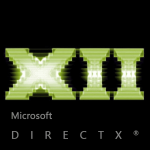In this lesson, you learn how to load textures into your DirectX 12 powered applications. You learn how to use the compute pipeline to generate mipmaps for textures. You also learn about texture samplers and how to specify a texture sampler in the root signature. A texture sampler is used to control how the texels are read in a shader.
Category Archives: DirectX 12
Learning DirectX 12 – Lesson 3 – Framework
In this tutorial, you will be introduced to several classes that will help you to create a robust and flexible framework for building DirectX 12 applications. Some of the problems that are solved with the classes introduced in this lesson are managing CPU descriptors, copying CPU descriptors to GPU visible descriptor heaps, managing resource state across multiple threads, and uploading dynamic buffer data to the GPU. To automatically manage the state and descriptors for resources, a custom command list class is also provided.
Learning DirectX 12 – Lesson 2 – Rendering
This is the second lesson in a series of lessons to teach you how to create a DirectX 12 powered application from scratch. In this lesson, vertex and index data is uploaded to the Graphics Processing Unit (GPU) for rendering. Basic vertex and pixel shaders are described and how to create a Pipeline State Object (PSO) that utilizes those shaders is also described. A root signature defines the parameters that are used by the stages of the rendering pipeline. In this lesson a simple root signature is created that defines a single constant buffer that contains the Model-View-Projection (MVP) matrix that is used to rotate a model in the scene.
Learning DirectX 12 – Lesson 1 – Initialize DirectX 12
This is the first lesson in a series of lessons to teach you how to create a DirectX 12 application from scratch. In this lesson, you will learn how to query for DirectX 12 capable display adapters that are available, create a DirectX 12 device, create a swap-chain, and you will also learn how to present the swap chain back buffer to the screen. In this lesson, you will also create a command queue and a command list and learn how to synchronize the CPU and GPU operations in order to correctly implement N-buffered rendering.

